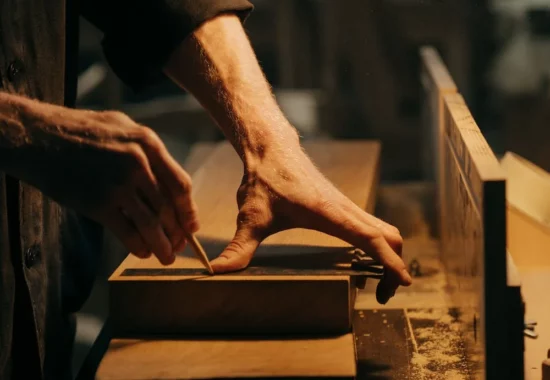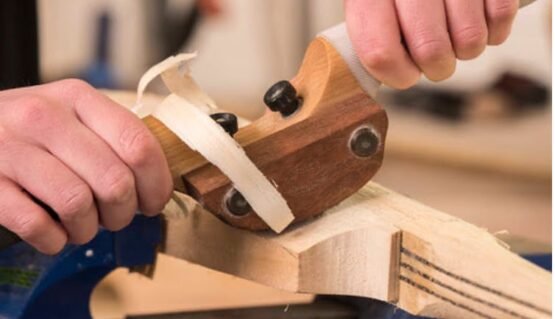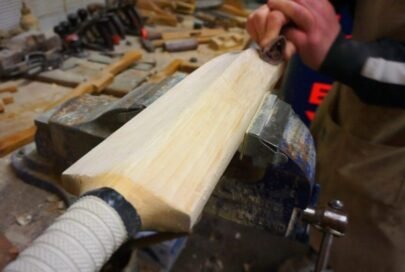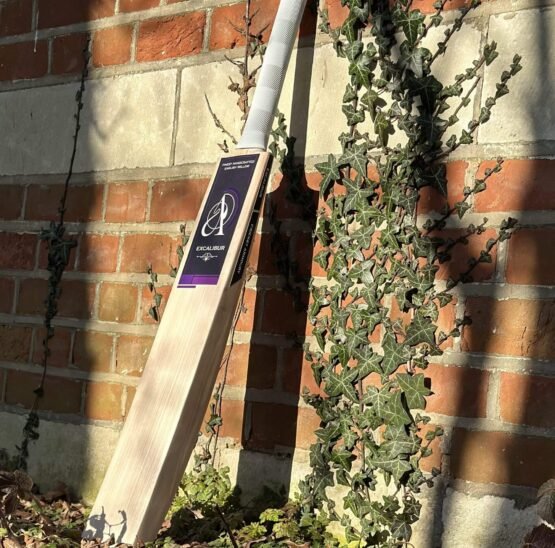Our bat making process

Step 1: Selecting the willow
We at Cricket Armoury believe that the success of any bay is contingent on the selection of high-quality English willow. Therefore, the process of bat creation at Cricket Armoury begins with the selection of the finest English willow available, providing the customer with the ability to choose the clefts themselves, to ensure the customer is elated with the end product.

Step 2: Fitting the handle
The handle acts as the bridge between the batsman and the cleft itself, and therefore a lot of work has been done to ensure that the handles create a bespoke and comfortable experience. The clefts and handles are spliced and fitted with the use of flexible wood glue. The handle is composed of cane and 3 rubber inserts in order to reduce vibration and create a more comfortable experience.
Step 3: Shaping the blade
Our bats are shaped firstly using a traditional draw knife then various wooden block planes and spoke shaves to ensure the shape is pleasing to the bat maker, thus ensuring the perfect weight, balance and pick up in every bat we produce.
The shaping of the blade itself is simply one of the most important stages in the creation of a bat. Our master craftsmen utilise tools to hand shape the bat into the perfect specification for each batsmen. The profile of the bat is responsible for the balance, weight and pick-up of the bat, and therefore extra time and energy is spent ensuring a great profile. The customer can customise the bat to their liking (refer to customisation guide) or use one of the premade profiles which are each designed to facilitate all different playing styles(refer to profiles for more detail).


Step 4: Shaping the shoulders and handle
Through the use of draw knife and a spokeshave, our master craftsmen hand shape the handle and shoulders of the bat to create a harmonious connection between the two. The handles are then shaped by hand in a thorough process, to ensure the shape fits perfectly in the batsmans hand. The handle shapes have been tried and tested, to ensure that each variant performs to the highest level. The customer has the choice of handle to shape to suit themselves.
Step 5: Sanding
Once the bat has been shaped, the bat needs to be sanded down to turn the bat into a finished product. An extensive process begins with multiple grades of sand paper being used to finish the bat, and create a smooth exterior.

Step 6: Binding
The binding acts as the necessary strength and stability of the cricket handle. To ensure that this binding ensures the security of the handle, glue is spread prior to binding, and the binding is made tight and firm, to ensure the longevity of the binding whilst further enhancing the security of the handle.
Step 7: Polishing
The final stage in the production of the bat is the polishing. The polish acts as another protective layer, whilst also enriching the aesthetic of the bat, providing a rich satin finish.
Step 8: Finishing
The finishing stage acts as the final check-over. The bats are gripped, stickered and knocked in. The bats are also inspected for any possible imperfections to ensure that each bat conforms with the high standards that are set out by Cricket Armoury.

